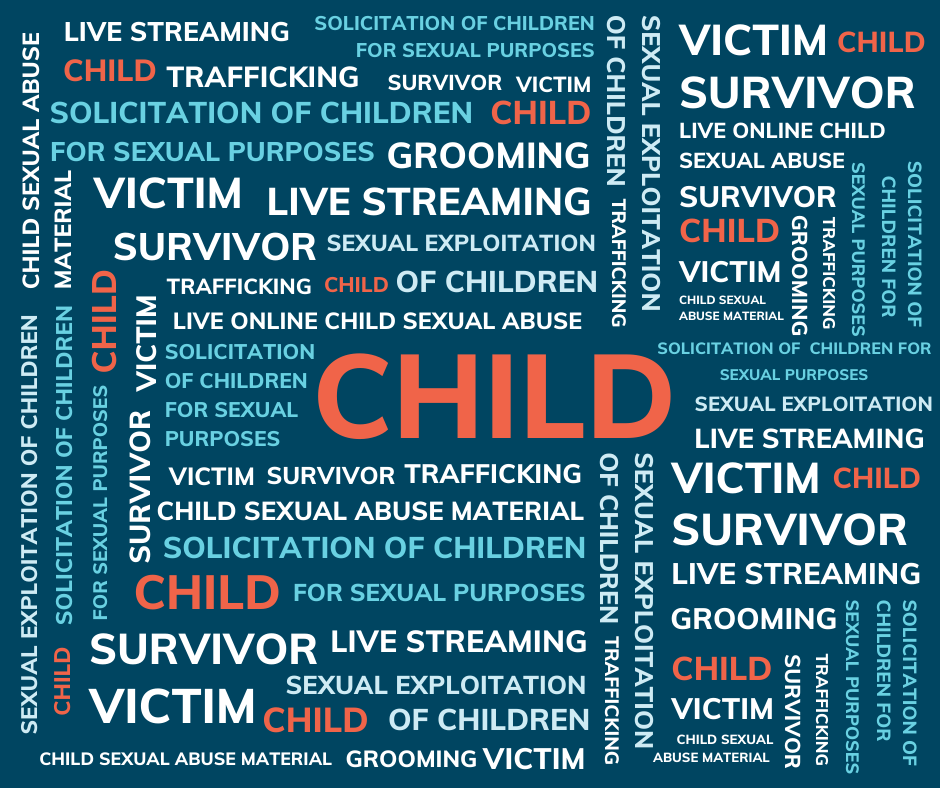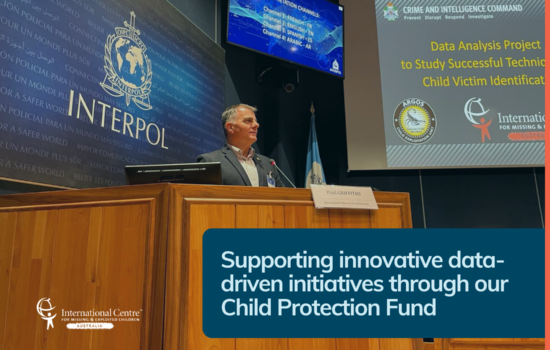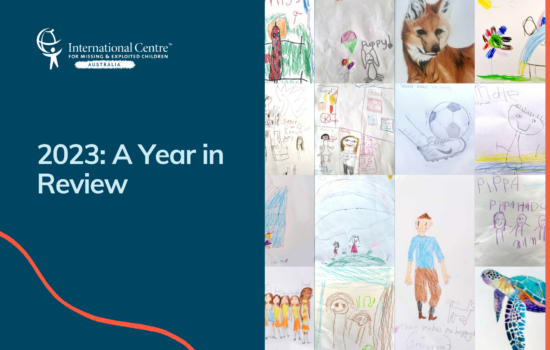Words Matter: The Importance of Using Proper Child Protection Terminology

Many of us have been told at some point “it’s not what you say, it’s how you say it.” The way we frame something affects how people understand a concept and how they respond to it¹.
Celebrities use framing to project a certain image to their fans. Politicians use framing to position an issue in a way that will appeal best to their constituents. Framing is all around us, shaping the way we see the world. Therefore, the way we as a society frame issues and the words we use to do so are important and should be chosen with careful consideration.
When it comes to child protection issues, consistent terminology is critical to frame violations against children as criminal acts, foster appropriate policy and legislation to defend children, and create a shared vocabulary around this global issue.
With shared vocabulary comes a common base level comprehension that allows everyone to be provided the same information and comprehend it in the same way. That is why child protection advocates joined forces to develop the Terminology Guidelines for the Protection of Children from Sexual Exploitation and Sexual Abuse. These Guidelines formalize terminology surrounding the sexual exploitation and abuse of children in a way that appropriately frames understanding and represents the best interests of children.
A lack of commonly accepted definitions as well as general comprehension of the terms undermines data collection and global collaboration. The issue is further complicated when the terms morph yet again during the translation process to convert them into various languages. As a result, ICMEC joined 17 other international organizations and key stakeholders to convene an Interagency Working Group, led by ECPAT International, whose aim was to establish common vocabulary to increase the effectiveness of the global efforts to protect children². These guidelines, now often referred to as the Luxembourg Guidelines, were adopted in 2016 and “provide all individuals and agencies working for the prevention and elimination of all forms of sexual exploitation and sexual abuse of children with guidance for the understanding and use of the different terms and concepts they may encounter in their work.”³ While the Luxembourg Guidelines offer a clear framework, there is still an urgent need to raise awareness of the use of proper terminology. Far too often, outdated terms are used in the media and legislation. This continues to perpetuate harmful framing and impedes the development of effective cross-border solutions, consistent policies, and accurate measurement, and thus, hinders our ability to prevent, address, and respond to child sexual exploitation and abuse. As Maud de Boer-Buquicchio, former UN Special Rapporteur on the sale and sexual exploitation of children and member of ICMEC’s Board of Directors stated,
“In the fight against sexual exploitation and sexual abuse of children, terminology is not just a matter of semantics: it determines the efficacy of responses.”
A very real example of the importance of proper terminology is the global movement to use the term “child sexual abuse material” (CSAM) to refer to images and videos depicting children in a sexual manner rather than “child pornography”, “child porn”, “kiddie porn”, or any other previously used term. Child protection advocates agree that the use of the word “pornography,” which refers to legal material involving consenting adults, when describing the sexual exploitation and abuse of children trivializes the issue rather than representing it as evidence of a crime that inflicts irreparable harm to children. It also implies consent, where children cannot give it. The bottom line is, when children are involved, it is not pornography. It is abuse and it is a crime⁴.
However, the term “child pornography” is still widely used in the media and in important legal instruments such as the Optional Protocol to the Convention on the Rights of the Child on the Sale of Children, Child Prostitution and Child Pornography⁵. ICMEC firmly believes that there is an urgent need to raise awareness of and make the necessary transition to the use of the term CSAM in order to build consensus in our global response, harmonize legislation and standardize penalties to protect children, strengthen collaboration across borders and sectors, and promote conversations that are more sensitive to victims of these crimes.
CSAM is just one of many examples in which terminology plays a significant role in how we conceptualize child protection issues and the need to update our practices and legislation to reflect this evolution in understanding. Language shapes how we see the world and how we weigh and respond to issues. Words matter. They matter to the children we are working to protect. They matter to the politicians and legislators in charge of enacting the necessary policies and laws to tackle these issues. They matter when journalists use them in the media. They matter to the general public when we as child protection advocates are trying to inspire their action. That is why it is essential to use appropriate terminology.
The Luxembourg Guidelines provide a framework for more effective protection of children all around the world. Take some time to familiarize yourself with these terms and share them with your community. Change begins with awareness and education, so the next time you read a news story or speak to a friend or colleague about these issues, take a moment to consider your words.
Words matter. Together we can protect children by changing the conversation for the better.
- https://www.frameworksinstitute.org/tools-and-resources/framing-101/
- https://ecpat.org/luxembourg-guidelines/
- https://cdn.icmec.org/wp-content/uploads/2020/07/Luxembourg-guidelines-definitions-CSA-and-CSE.pdf
- https://www.interpol.int/en/Crimes/Crimes-against-children/Appropriate-terminology
- https://www.unodc.org/e4j/en/cybercrime/module-12/key-issues/online-child-sexual-exploitation-and-abuse.html



